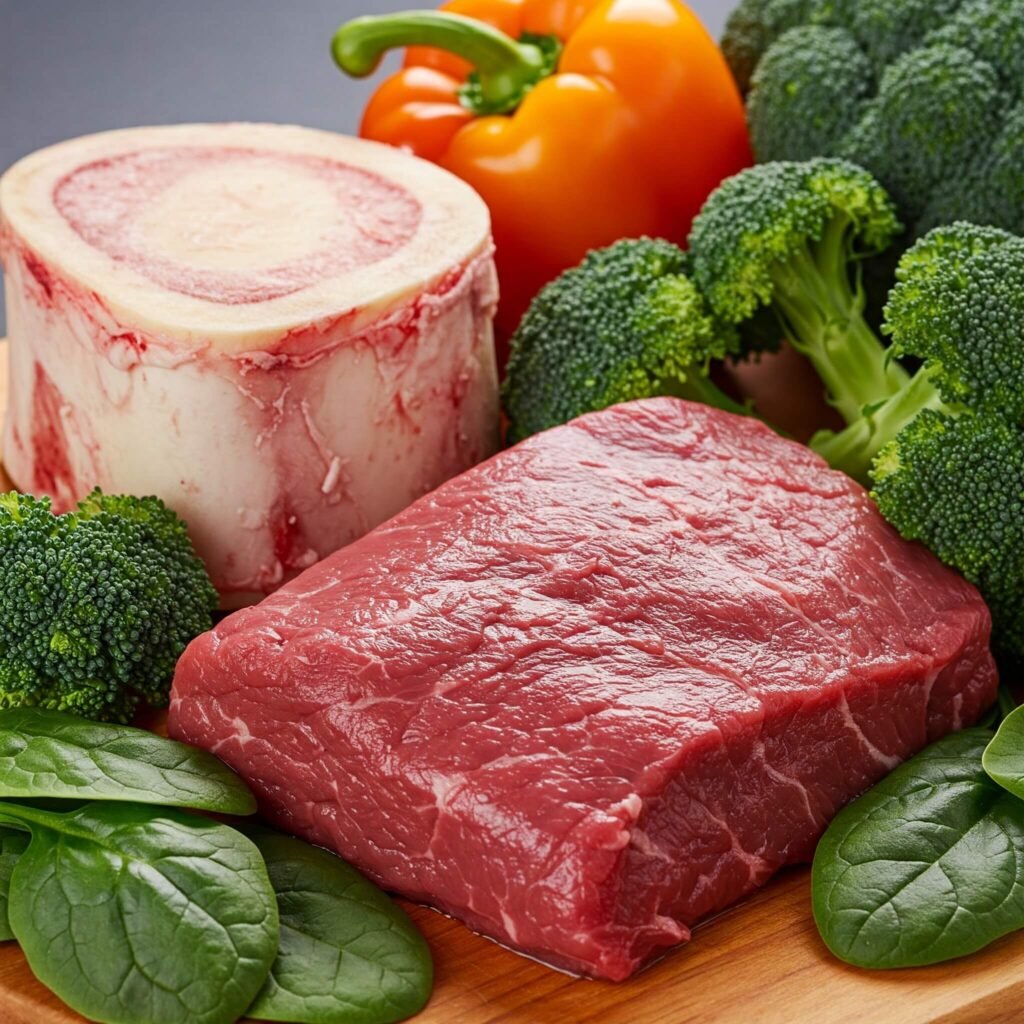Considering a raw food diet for dogs for your beloved companion? This comprehensive guide will delve into the potential benefits of a raw food diet for dogs, acknowledge the associated risks, and even provide you with some simple raw food diet for dogs recipes to get started. As pet owners, we constantly strive to provide the best for our furry friends, and nutrition plays a pivotal role in their overall well-being.
Understanding Raw Food Diets for Canines
Essentially, a raw food diet for dogs mimics the ancestral eating habits of wild canids. For instance, it typically includes uncooked meat (muscle, organ, and bone). Additionally, raw fruits, vegetables, and sometimes dairy are part of this feeding approach. The underlying idea is that dogs are biologically built to thrive on whole, unprocessed foods. Consequently, this can lead to better health.
Potential Advantages of Feeding a Raw Diet to Dogs
Notably, people who support a raw food for dogs mention several potential health advantages. While research is ongoing, many owners, for example, report positive changes:
- Improved Digestion: Raw foods contain natural enzymes. As a result, this aids digestion. Thus, it may mean fewer digestive issues and firmer stools.
- Shinier Coat and Healthier Skin: Raw meats, in particular, have high levels of essential fatty acids. Therefore, these can lead to a lustrous coat and fewer skin problems.
- Increased Energy Levels: Significantly, many owners see more energy in their dogs when they transition to a raw food for dogs.
- Stronger Immune System: Moreover, whole nutrients and antioxidants in raw foods may boost immunity.
- Better Dental Health: Furthermore, chewing appropriate raw bones (if supervised and the right size) can help clean teeth and reduce tartar.
- Weight Management: Also, a balanced raw food for dogs can contribute to maintaining a healthy weight. This is primarily due to natural, unprocessed ingredients.
- Reduced Allergies: In some cases, dogs with food sensitivities may experience relief on a carefully managed raw food for dogs.

Potential Drawbacks of Raw Feeding for Dogs
While the benefits sound appealing, there are, however, risks associated with feeding a raw food for dogs:
- Nutritional Imbalances: Without careful planning, a homemade raw food for dogs can lack or have too much of some nutrients. Therefore, consulting a veterinary nutritionist is highly recommended.
- Bacterial Contamination: Unfortunately, raw meat can harbor harmful bacteria like Salmonella and E. coli. Consequently, this risks your dog and family. Proper handling and hygiene are, therefore, key.
- First, buy raw meat from trusted sources.
- Next, store raw meat correctly in the fridge or freezer.
- Then, thaw raw meat in the fridge, not at room temperature.
- Also, clean all surfaces and tools that touch raw meat well.
- Finally, wash your hands thoroughly after handling raw meat.
- Risk of Bone Issues: While raw bones can be beneficial, cooked bones are dangerous as they can, in fact, splinter. Even with raw bones, choose the right size and watch your dog to prevent choking or internal injury.
- Cost and Time: Indeed, a good raw food diet for dogs can cost more and take more time to prepare than conventional kibble.
Simple Raw Food Recipes for Your Dog
If you plan to switch your dog to a raw food diet for dogs, do it slowly. Above all, get advice from a vet or a certified canine nutritionist. Here are a couple of basic recipe ideas to illustrate the concept:
Recipe 1: Basic Raw Meal
- 80% Raw Muscle Meat (e.g., chicken thighs, beef chunks)
- 10% Raw Edible Bone (e.g., chicken necks, turkey necks)
- 5% Raw Liver
- 5% Other Raw Organ Meat (e.g., kidney, spleen)
Recipe 2: Balanced Raw Recipe
- 70% Raw Muscle Meat (e.g., ground beef, lamb)
- 10% Raw Edible Bone (e.g., chicken backs, duck wings)
- 5% Raw Liver
- 5% Other Raw Organ Meat
- 10% Pureed Raw Vegetables (e.g., carrots, broccoli, spinach)
Important Considerations:
- Variety is Key: For instance, use different protein sources and vegetables for a wide range of nutrients.
- Avoid Cooked Bones: Simply put, cooked bones are brittle and dangerous.
- Supplementation: Depending on their needs and recipes, your dog might need supplements like omega-3s. Therefore, ask your vet.
- Transition Slowly: Gradually introduce raw foods over 7-10 days. At first, mix small amounts with their current food.

Final Thoughts on Raw Food Diets for Dogs
In conclusion, a raw food diet for dogs can offer benefits for some dogs. However, it has risks and needs careful planning, preparation, and food safety. Before changing your dog’s diet, it’s crucial to talk to your vet or a board-certified veterinary nutritionist. They can assess your dog’s needs and health. Consequently, they can help you decide if a raw food diet for dogs is a safe and right choice for your pet. Ultimately, remember, a balanced and nutritious diet is most important, whether it’s raw, kibble, or a mix








































